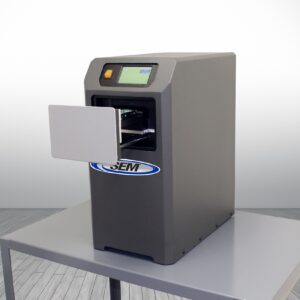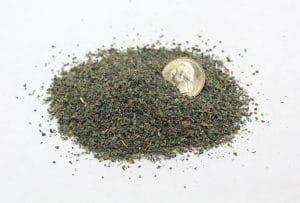 Over the 20 years I have been working for SEM, I have explained to customers and former military colleagues about the requirements for classified destruction. Lately these requirements have become stricter due to the ever-changing technologies. It’s not as easy as just putting your paper in a shredder or disintegrator and walking away knowing your classified is destroyed. Your classified now comes on many types of media. With so many types of media, a requirement had to be set forth by the National Security Agency (NSA) as to how these needed to be destroyed. We will discuss destroying hard drives as it relates to the National Institute of Standards and Technology (NIST) 800-88 and NSA Evaluated Products List (EPL) for Hard Drive Destruction.
Over the 20 years I have been working for SEM, I have explained to customers and former military colleagues about the requirements for classified destruction. Lately these requirements have become stricter due to the ever-changing technologies. It’s not as easy as just putting your paper in a shredder or disintegrator and walking away knowing your classified is destroyed. Your classified now comes on many types of media. With so many types of media, a requirement had to be set forth by the National Security Agency (NSA) as to how these needed to be destroyed. We will discuss destroying hard drives as it relates to the National Institute of Standards and Technology (NIST) 800-88 and NSA Evaluated Products List (EPL) for Hard Drive Destruction.
For this blog, I will only discuss a brief overview for the destruction of hard disks (SCSI, ATA, SATA). NIST 800-88 explains on page 16, table 5-1 there are three methods of destroying hard disks. The first is to CLEAR. This method uses software to overwrite the storage space on the media with non-sensitive data (unclassified) and gives you the option to reuse your hard drive. The second is to PURGE. This method uses degaussing and the Secure Erase command present on some ATA drives. This method is very effective again for unclassified drives. The third method is PHYSICAL DESTRUCTION. This method is the standard for classified data and it destroys the drive by using disintegration, pulverization, melting, or incineration.

The second paragraph of the NSA/CSS EPL for Hard Drive Destruction Devices states, “Hard drive destruction devices on their own DO NOT SANITIZE magnetic and/or solid-state storage devices; use of these machines is only authorized in conjunction with degaussing for routine magnetic hard disk drive sanitization or by themselves only in extreme emergency situations. Sanitization guidance for classified storage devices is located in the NSA/CSS PM 9-12 Storage Device Sanitization Manual.” This leads you to believe that degaussing could be used on a solid state drive (SSD). This is misleading! A magnetic field created by a degausser will cause no damage to an SSD. A degausser will only destroy information on a standard rotational magnetic drive.

In the third paragraph it states; “All shredders designed for hard drives are approved for deformation of magnetic hard drive platters. Shredding alone will NOT SANITIZE magnetic and/or solid state storage devices unless a two-millimeter particle size or less of the magnetic disk or solid-state memory chip is accomplished in accordance with NSA/CSS PM 9-12 Storage Device Sanitization Manual.” This states that if you have a hard drive or SSD, you can shred it to a 2mm particle to sanitize the drive. This is confusing. Although the NSA guidelines REQUIRE you to reduce a classified SSD to a two-millimeter particle to render the device sanitized, the machine that does this may not be able to shred a standard magnetic hard disk drive to this two-millimeter particle. This is due to the size and materials used in the manufacturing of a magnetic hard disk.
In conclusion, in order to completely destroy the information in a hard drive is a two-step process for a magnetic hard drive and a single step process for a SSD.
A magnetic disk MUST BE degaussed using an NSA approved degausser THEN physically destroyed. This second step of physical destruction is left up to the end user and can vary greatly. It can be as simple as drilling a hole in the drive, hitting it several times with a hammer, or using a hydraulic punch or hard drive shredder. A solid state drive MUST be shredded to a two-millimeter particle and cannot be degaussed.
If you have any questions or would like to talk to a security professional, feel free to reach out to me or any SEM representative.
 Karl Lotvedt, DC Region Sales Support, has over 20 years of experience with SEM, including targeted expertise in understanding military procedures and requirements. Prior to joining SEM, Karl spent 20 years in the United States Air Force including over five years in procurement. Now retired from the Air Force, Karl currently serves as an Air Force resource advisor. Karl received his AA and CIS from National College in Rapid City, SD.
Karl Lotvedt, DC Region Sales Support, has over 20 years of experience with SEM, including targeted expertise in understanding military procedures and requirements. Prior to joining SEM, Karl spent 20 years in the United States Air Force including over five years in procurement. Now retired from the Air Force, Karl currently serves as an Air Force resource advisor. Karl received his AA and CIS from National College in Rapid City, SD.

